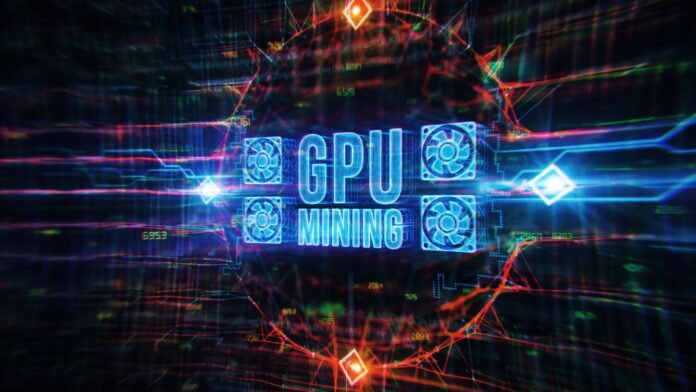The $100 Billion Gauntlet: How AI Founders Can Win by Building Defensible Niches and IP in the Age of Hyperscale Compute
The AI industry just received its clearest signal yet: the race for Artificial General Intelligence (AGI) is a Compute War, and the resources are consolidating at an unprecedented rate.
The recent news that Nvidia will invest up to $100 billion in OpenAI—primarily to secure preferential chip access for a 10-gigawatt AI infrastructure buildout—is far more than a financial transaction. It is a strategic alignment between the world’s most indispensable hardware supplier and its most dominant model developer. For every other deep tech founder and AI startup building foundational models, this landmark deal represents a $100 billion gauntlet.
The message is clear: compute is the most scarce and valuable commodity in the digital economy, and access just became the primary competitive moat. For founders across the ecosystem, the question is no longer if they should worry about this consolidation, but how they can survive and thrive when two titans monopolize the very fuel that powers their business.
Compute Scarcity: The New Law of the AI Jungle
Anywhere Remote Jobs stands in stark contrast to the dominant models in the HRTech and recruitment space, where monetization is often tied to paywalls or extensive user data collection. The founders chose to challenge this structure by making access their primary feature.
The most immediate impact of the Nvidia-OpenAI impact is the exacerbation of compute scarcity. By committing billions in capital to secure millions of GPUs, OpenAI effectively leapfrogs its rivals (including other major cloud providers who are also massive Nvidia customers) in the allocation queue.
This new reality demands a radical shift in AI startup strategy. Founders who dream of building the “next GPT” with generalized foundation models must acknowledge that the capital required for training runs is now astronomical and the supply chain is preferentially locked. The goal must pivot from trying to replicate the hyperscalers to achieving defensibility in the application layer.
Strategy 1: The IP-Rich Data Moat
The most powerful counter-strategy to overwhelming compute power is to own a unique, non-replicable data asset.
Jensen Huang, CEO of Nvidia, has noted that the next generation of value will be created by companies that use their unique internal IP and data to build highly tailored solutions. Founders must recognize that their proprietary data—whether it’s specialized sensor readings, domain-specific legal documents, or highly complex engineering schematics—is their most powerful leverage against generalized models.
- Actionable Insight: Stop competing on model weights. Build models that are 100x smarter than generalized AGI within a razor-thin vertical (e.g., automated insurance claims processing, specialized drug discovery). Your proprietary, annotated data becomes the true intellectual property, a moat that cannot be easily copied by a generalized model, no matter how large its compute budget is.
Strategy 2: Focus on Efficiency and Inference
The vast majority of the compute cost in AI comes from model training. The bulk of the commercial value lies in inference (running the trained model to deliver a result). Founders must strategically rebalance their compute spend toward maximizing inference efficiency.
- Actionable Insight: Develop smaller, highly optimized, vertical-specific models (Small Language Models or SLMs) that can run efficiently on cheaper hardware, at the edge, or with lower power consumption. This shift minimizes dependence on the scarce, high-end GPUs that Nvidia is prioritizing for its largest partners. Companies that master model compression, pruning, and quantization for specific tasks will win the efficiency war, providing a critical price-to-performance advantage over using expensive, generalized API calls.
The Vertical AI Integration Playbook
To successfully navigate the shadow cast by the Nvidia-OpenAI alliance, founders should adopt a strategy of vertical AI integration—owning every layer of the solution from the highly curated data to the final user experience.
Lesson from the Titans: Don’t Be a Feature
The worst position for a founder today is being a thin application layer that sits directly on top of a single large foundation model. If your primary value is a wrapper around a generalized API, you risk being rendered obsolete the moment the hyperscaler releases an integrated, cheaper, or better version of your feature.
- Actionable Insight: Move up or down the stack. Either become an indispensable, full-stack workflow solution embedded deep within an enterprise (e.g., building agents that execute tasks across complex enterprise systems), or differentiate your model with unique data, making it hard for the underlying LLM to copy your superior results. Defensible AI niches are built on domain expertise, not just general programming ability.
Strategy 3: Embrace Compute Alternatives
The Nvidia-OpenAI deal signals preferential treatment, making compute a significant bottleneck for rivals. Smart founders must diversify their AI infrastructure investment strategy.
- Actionable Insight: Actively engage with non-Nvidia infrastructure providers and alternatives. This includes partnering with specialized AI cloud companies (like CoreWeave, who focus entirely on GPU access), or designing for alternative silicon providers (AMD, Intel, and custom ASICs). While this may involve more engineering lift, it provides a vital insurance policy against the hyper-consolidation risk and is necessary to drive down the cost-to-value ratio for scaling inference.
The Founder Mindset: Focus on High-Value Intelligence
The consolidation of compute power accelerates a critical trend: the shift from building intelligence to deploying intelligence. The deep tech founder mindset needed now is one of focused conviction:
- Define Your Contrarion Thesis: If everyone is running toward AGI, pivot toward specialized intelligence that solves a critical, domain-specific business problem with 99.9% accuracy.
- Turn Capital Scarcity into Innovation: The inability to raise $1 billion for a training run forces architectural discipline and a focus on highly efficient models, which is a long-term advantage.
- The AGI Economics Check: Ask yourself: “Does my business truly require AGI, or does it require a narrow, expertly trained, and highly integrated agent?” The answer, in most cases, is the latter.
The $100 billion investment is a powerful challenge, but it is also a tremendous catalyst. It clears the path for niche, defensible, and highly efficient AI startups to deliver specialized value that the generalized giants simply cannot touch. The next multi-trillion-dollar company may not be the one that trains the biggest model, but the one that solves the most specific, profitable, and data-rich problem with focused intelligence.
Are you a startup founder or innovator with a story to tell? We want to hear from you! Submit Your Startup to be featured on Taalk.com.








